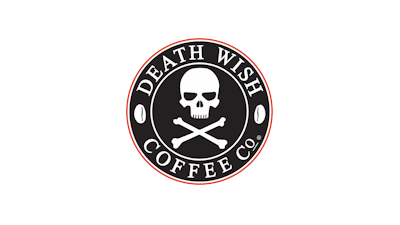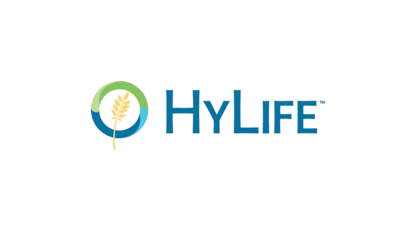Oftentimes, as a company grows, it becomes evident that some of its existing processes are no longer supporting the business. Such was the case for Claxton Poultry as they sought to expand their operations to a new facility. The challenge of outfitting their newest plant with systems and processes that supported visibility and agility ultimately led them to seek out a paperless platform that would facilitate simpler management of food safety and quality programs.
The team at Claxton knew a food safety and quality management platform would aid in helping them meet rigorous compliance requirements, along with supporting overall growth. They also knew that, as with any major change, finding the right technology would require careful consideration and planning.
In this guide, we’ll share more details about Claxton Poultry and their drive to go paperless, as well as the factors that led to a successful implementation. Plant Manager Eric Sorel and Production Manager Belle Mathis have shared the experiences detailed in the coming pages, including:
- The main problems Claxton Poultry sought to solve with technology
- Internal considerations that had to be addressed through a paperless system
- Drivers for a successful implementation
- Benefits witnessed since leveraging SafetyChain
To start, we’ll learn more about Claxton Poultry and their goals for adopting new technology.
About Claxton Poultry
Claxton Poultry is a family-owned, egg-to-market poultry company. At the beginning of their hunt for a food safety technology platform, they were laying plans for a state-of-the-art chicken deboning and packaging facility in Sylvania, GA to help their growth plans. As they prepped for the expansion, they had many decisions to make, including facility layout, overall operations, which equipment to use, and how to manage the food safety, quality, and internal programs.
First and foremost, they knew they wanted to digitize the programs. Their desire to take their food safety and quality activities digital had much to do with the need to stay competitive in the market, handle a new large client’s request for daily data visibility, and reducing the hassles that an analog system entails. Plus, as Eric Sorel put it bluntly, “Did we really want to plan to have a room for filing cabinets for the physical paperwork?”
Yet, there were other challenges they wanted to address outside of simply forgoing filing cabinets.
What Problems Did Claxton Poultry Want to Solve with Technology?
With a fresh, modern facility underway, the team from Claxton Poultry wanted to streamline operations as much as possible. They knew that a paperless system would be easier to run. Plus, by implementing a new platform in the new plant, they’d know exactly what to do when the time came to roll it out in their main facility.
With a fresh, modern facility underway, the team from Claxton Poultry wanted to streamline operations as much as possible. They knew that a paperless system would be easier to run. Plus, by implementing a new platform in the new plant, they’d know exactly what to do when the time came to roll it out in their main facility.
The poultry industry in general faces significant regulatory challenges. Claxton Poultry is BRC certified and routinely undergoes food safety audits as well. In addition to these standard compliance pressures, the company also had one customer with rigorous reporting requirements, including detailed daily updates.
With paper-based processes, audit readiness was becoming a challenge. The team couldn’t see data in trends, but instead only had access to small pieces of a whole. Moreover, maintaining time-consuming manual processes and paperwork was nearly a full-time job in itself. Checking and verifying paperwork was tedious, and when fields were missing, the production manager would have to track down the appropriate personnel to figure out what happened. Of course, the error-prone process of putting paper to pencil to document production data also took up a great deal of time. As Eric noted, “We wanted to streamline the process with something that would be state-of-the-art, efficient, seamless, and a little bit easier to run.”
The Project Scope
To be successful, Claxton Poultry’s technology solution would need to seamlessly support a number of programs, including:
- Food Safety Programs
- BRC
- HACCP
- SSOP
- Quality Programs
- Food defense daily audit
- Pre-op, package, and pre-ship
- Internal quality programs
- Internal Programs
- Anti-microbial
- Product temperatures
- Production paperwork
Fortunately, the Claxton team had a good grasp of what they needed to do in order to go digital, which would ultimately make the process more seamless. Still, they had several considerations that needed to be addressed as they planned for the implementation.
What Considerations Did Claxton Address When Selecting a Solution?
Powering their new facility with a paperless system was the biggest consideration for the Claxton team to address, but they also had other factors in mind when they sought out to find the best solution. In particular, they’d need a system with supreme flexibility. With more than 50 forms to accommodate and teams who had unique processes, forms, and checklists, Claxton needed a platform that could be fully tailored to the plant’s unique operations. In short, the solution would have to be able to tackle everything Claxton threw at it.
Direct observations, in which trained personnel look for defects or issues, would also be key — as would notifications sent directly to supervisors and shift managers. With these alerts, leaders could get notified of issues as soon as they happened, without having to be tracked down, which leads to much quicker issue resolution.
The data was everywhere on paper. Pre-op, package, pre-ship, daily food defense audit, BRC, HACCP, SSOP, plus the internal checks such as anti-microbial, temperature checks, and production paperwork all lived in binders or in filing cabinets. Since implementing SafetyChain, data has become more readily available to the Claxton team. They’re able to see data in real time and can spot issues in minutes instead of hours and sometimes days. Since data is available (on desktop, mobile device, or workstation - regardless of the operating system), the system also frees up significant time. While everyone has processes unique to their area of expertise, the platform’s robust architecture ensured the plant’s many workflows could all be carried out effectively.
The solution also offered the simplicity and detail sought after by the Claxton workforce. The plant’s head of QA is justifiably meticulous, while the younger crew naturally gravitates towards automated tools. SafeyChain’s detailed reporting functions and automation were a great fit for Claxton teams. The platform can also be used on mobile devices, including tablets and phones, making it a winning choice for employees all throughout the facility, including those on the floor.
In addition to its powerful and intuitive features that met Claxton’s needs, there were also some additional drivers of success for the implementation.
What Were the Biggest Drivers of Success in the Implementation?
To facilitate success from the start, the Claxton crew made sure to get organized and have everything prepared before taking on the SafetyChain implementation. They knew exactly which forms they’d need to create, which could be combined together, and which would be easiest to make as a starting point. To keep track of their many forms, they created an Excel spreadsheet with all of the essential information such as what forms are associate with which programs. For the strategic approach, Claxton began building the simplest forms first, which allowed them to get familiar with building their own forms. As Belle and her team became more familiar with how to re-create their existing forms in SafetyChain, they moved on to more complex checks such as HACCP and BRC.
Having software that was easy to learn and easy to use also made for a hassle-free implementation. The younger crew was enthusiastic and wanted to get it right, and the team was especially eager to use the dashboards and auditable data that could be retrieved at any given moment.
Finally, SafetyChain’s approach to the implementation and ongoing support also factored into the project’s success. Starting with a dedicated project manager, and a fully developed implementation plan, SafetyChain was committed to teaching the Claxton team the ins and outs of the platform so they could navigate it confidently. SafetyChain also lined up programs to Claxton’s forms and made sure the system was thoroughly tested. Finally, both parties were committed to maintaining a tight schedule in order to stay on track with Claxton’s target time frame.
What Benefits Has SafetyChain Created for Claxton?
The main benefit Claxton has witnessed since implementing SafetyChain is that the platform has reduced the time they spend on compliance each and every day. Previously, it would take one-half to one full day to find paperwork then track down its source to address any questions or concerns. The data for important initiatives like the BRC audit was always there; it was just a matter of finding it. Finding it was expensive, though. On an annual basis, this looking and searching for information and data cost Claxton over $14,000. Instead of manually searching for it, Claxton employees can now find it quickly by searching the records in SafetyChain - all of the documents, sign offs, and checks are linked in a way that makes them instantly available. As Belle notes, “We can pull up a form, and go through all the records we had for it for months. There’s no flipping through packets.”
For audit situations, they don’t have to go digging for information while an auditor waits, and they know everything is filled out to completion, located in the right place, and simple to understand. SafetyChain governs all of this detail while the checks and inspections occur. Moreover, the data entry process is much smoother, whereas the previous process required several steps, including filling out forms, manually entering data into spreadsheets, and emailing reports. For example, preparing for the BRC audit took at least half a day, while data can now be retrieved in moments. They’ve also slashed the time for the FSA audit in half, taking it from 3 days to one and a half.
With these changes come enhanced visibility. Previously, it seemed as if data insights were always playing catch-up and incoming information was behind by up to eight hours. Now, the easy-to-use dashboards and key trends featured in SafetyChain allow Claxton to take a more proactive approach for better, quicker decisions.
Now, Claxton leadership also has more time to dedicate to training their staff and pursuing projects that will have a meaningful business impact. The data insights can help drive lasting improvements, including improved yield, maximized productivity, and ongoing compliance. While they’ve started with the Sylvania facility, they’ve already begun getting QA managers in their main facility up-to-speed on what to expect with SafetyChain. With this initial project successfully underway, going paperless at their larger facility will be an even smoother transition.
Summary
Opening a new facility is a major endeavor, but it proved to be the perfect starting point for Claxton’s transition to a paperless system. Implementing SafetyChain has led to many gains for the company, including the ability to achieve real-time visibility into their operations as well as streamlined management of their BRC, HACCP, and SSOP programs.
To recap, here are some key takeaways from Claxton’s success story to bear in mind:
- While there are already many steps to take when opening a new facility, the Claxton team knew that pursuing a technology project while planning out their plant would lead to smoother processes in the long run. They didn’t want to take up valuable real estate in the new location with a room full of filing cabinets. Plus, they knew a food safety management platform would make it easier to provide the daily data reports requested by their valued customers, save time by reducing manual processes, and and improve decision making. provide visibility into critical data that would help them meet regulatory challenges
- Beyond planning for a new facility, Claxton also had internal considerations to plan for, including a large number of forms. They knew the solution they ultimately chose would have to be flexible, offer data analysis and business intelligence, and be simple yet detailed.
- Using a spreadsheet to keep track of their many forms was an important aspect of the project’s success. Claxton also started with a few of the simpler forms and checks to help learn how to use the system, then moved their attention to the most robust programs. SafetyChain’s easy-to-use software and supportive team also contributed to the project’s overall success.
- While one driver for going paperless was to eliminate the need for a room full of filing cabinets in their new plant, the Claxton team have witnessed many more benefits outside of that. Having instant access to real-time data allows them to be more proactive when making decisions. They also have more time to dedicate to training and strategic initiatives, as well as the data needed to fuel endeavors such as improved yield, productivity, and compliance.
As Claxton looks ahead to their future, it only makes sense to leave time-consuming and effort-intensive processes behind. For this poultry company, the gains achieved by SafetyChain’s paperless system have already been well worth the effort of making the switch to a food safety and quality management platform. With increased visibility and simpler processes, the benefits will continue to be realized throughout their Sylvania facility and beyond.


